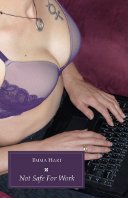It’s a fairly safe assumption that if the Christchurch Art Gallery is going to have an exhibition called The Naked and the Nude, I’m going to go. Slightly less obvious that I’m going to take my mother with me, unless you know my mother.
It’s not all prurient interest, of course. It’s the fact that they’re dealing with the difference between ‘naked’ and ‘nude’, with the way context makes things okay or not okay to look at. Gallery director Jenny Harper says:
When we use the term “naked”, we are referring to being deprived of clothes. It’s a word that almost generates embarrassment of such a condition. We regularly speak of ”the naked truth” and ”the naked soul”, which suggests that nakedness is not just a physical state but a spiritual and psychological one.
The word ”nude”, on the other hand, carries no uncomfortable overtone. The image it projects is not of a defenceless body, but of a confident body. Culturally, the nude in art raises issues associated with the human condition: status, sexuality, eroticism and desire, feminism, objectification and, at times, voyeurism.
Wandering through the exhibition – and the gallery was delightfully busy the day we went – other things struck me. The naked bodies were honest, realistic, ordinary bodies. The arty nudes had a sense of elision about them, an idealism, the human body as it should be, young, lithe, beautiful, and beautifully lit.
And female. In general as you move through the exhibition you move forward in time, and the depictions of naked male bodies are reserved for the end. This is partially a result of the art being chosen from the Gallery’s existing collections, but not entirely. The wall of pictures of bathers is of female bathers, and something about it make me slightly uncomfortable. Some of that discomfort comes from three of the artworks having no heads visible. Some of it comes from so many naked bodies, so few genitals.
There was also a sense, though, in many of those works, that the subjects know they’re being looked at, a sort of self-consciousness, an artificial posed-ness. It hit home particularly strongly at the end of the bathing wall when I found one of my favourite paintings – Evelyn Page’s Summer Morn.
Look at that, it’s beautiful. Partly it’s the light on the water and through the trees. What strikes me particularly, though, is the confidence in the naked figure. She’s so sure in herself, so unselfconscious. Her body is for herself to enjoy, not presented for a viewer, for an artist. It highlighted the lack of that pleasure in the pictures that came before it.
(This impression is slightly undermined when you find out that the model stopped the painting from being displayed until after her death, because it made her so uncomfortable.)
The absence of male bodies continued to bother me, though. The obvious message is that women are to be the object of gaze, to be looked at. The less obvious message is that men are not for looking at. Their bodies are not beautiful, not artistic, not nude, but naked. Legitimate artistic gaze goes from a straight man onto a straight woman. Perhaps it’s a Victorian thing: Renaissance art is full of beautiful naked men.
Rounding a corner and being confronted with Fiona Pardington’s gorgeous photographs of a scarred male body was fabulous. One image in Proud Flesh kept drawing me back – that of an ear, severed and reattached. Presented as an image of beauty, it was beautiful. That part of the gallery is full of complicated problematic images of men that require a long, thoughtful viewing, like Di ffrench’s The Hunter Warrior. What that painting says about men’s bodies and the values and traits associated with them is quite different from what, say, this says about women. You’ll note, however, still no genitalia.
Naked men are somehow more indecent than naked women – an attitude Filament would find strangely familiar. These ideas about how a naked body can be presented to be acceptable, and what kind of naked body is acceptable in what context, continue to intrigue me. After ‘fine art nudes’ and ‘naked art’ come ‘erotica’ and ‘pornography’, and nowhere are the boundaries hard and clear.
The Naked and the Nude runs at Christchurch Art Gallery Te Puna o Waiwhetu until the 18th of April. But remember, it may contain traces of nuts.
(My thanks to @ChchArtGallery for their help in putting this column together.)
